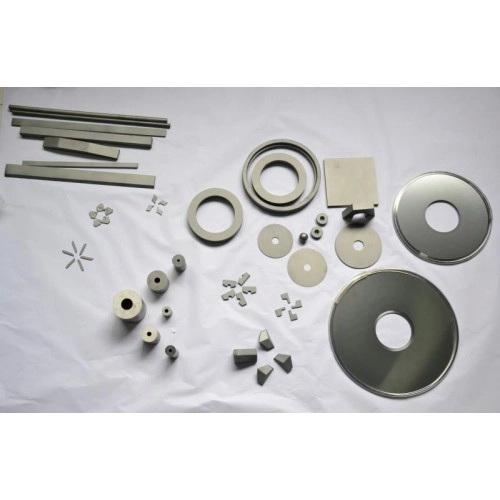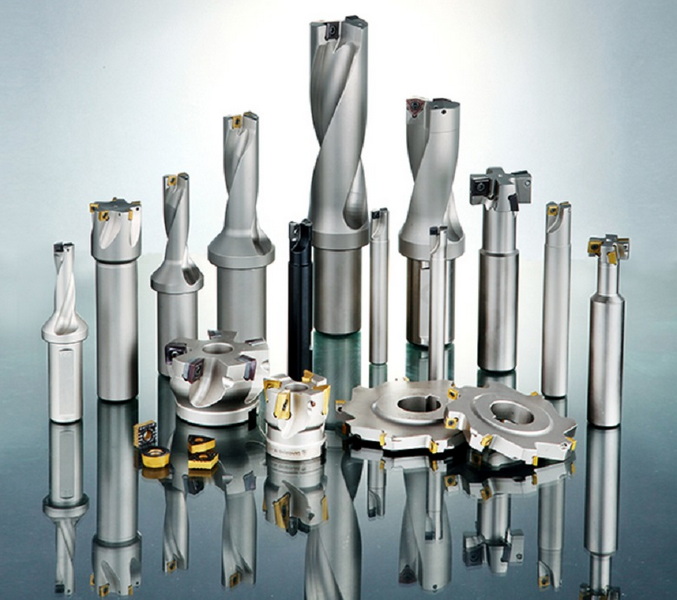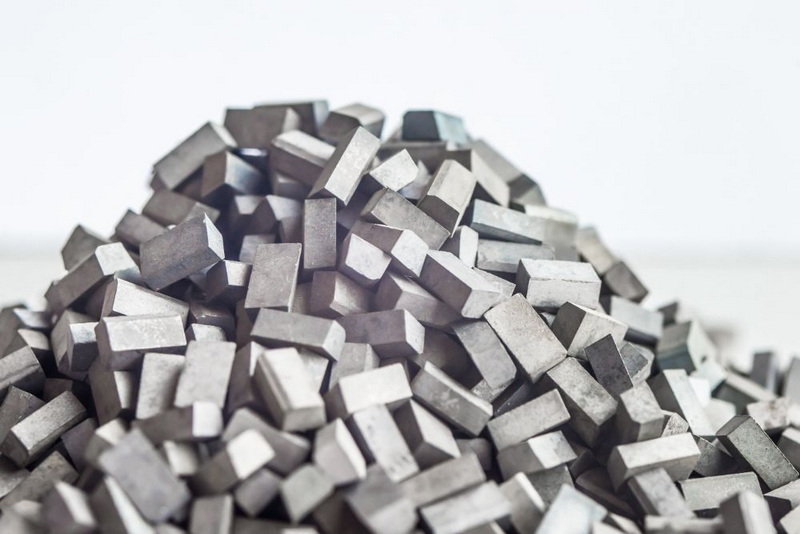Content Menu
● What is Tungsten Carbide?
● Properties of Tungsten Carbide
>> Mechanical Properties
>> Thermal Properties
>> Chemical Resistance
● Applications of Tungsten Carbide
● Market Factors Influencing Tungsten Carbide Prices
● Current Market Prices
● Economic Impact on Industries
● Future Trends in Tungsten Carbide Pricing
● In-depth Analysis of Key Industries Using Tungsten Carbide
>> 1. Aerospace Industry
>> 2. Oil & Gas Industry
>> 3. Mining Industry
>> 4. Medical Field
● Challenges Facing the Tungsten Carbide Market
● Conclusion
● FAQs
>> 1. What are the main uses of tungsten carbide?
>> 2. Why is tungsten carbide so expensive?
>> 3. Can tungsten carbide be recycled?
>> 4. How does tungsten carbide compare to other materials?
>> 5. What factors affect the price of tungsten carbide?
● Citations:
Tungsten carbide, a highly durable and versatile material, is widely used across various industries due to its exceptional properties. Understanding its value requires an exploration of its composition, applications, and the factors influencing its market price. This article delves into the worth of tungsten carbide, examining its properties, uses, and the economic aspects that determine its pricing.

What is Tungsten Carbide?
Tungsten carbide (WC) is a chemical compound composed of tungsten and carbon atoms. It is known for its remarkable hardness, second only to diamond among industrial materials. The typical composition consists of approximately 94% tungsten and 6% carbon by weight. This unique structure gives tungsten carbide its impressive wear resistance and thermal stability, making it suitable for demanding applications.
Properties of Tungsten Carbide
Mechanical Properties
- Hardness: Tungsten carbide boasts a hardness rating of 15 on the Mohs scale, making it incredibly resistant to scratching and wear.
- Density: It has a density approximately twice that of steel, contributing to its robustness.
- Compressive Strength: The material exhibits exceptional resistance to deformation under pressure, which makes it ideal for heavy-duty applications.
Thermal Properties
- Melting Point: Tungsten carbide has a melting point of about 2,870°C (5,200°F), allowing it to maintain integrity at high temperatures.
- Thermal Conductivity: Efficient heat dissipation makes it ideal for high-temperature applications, such as in cutting tools that generate significant heat during operation.
Chemical Resistance
Tungsten carbide is resistant to many acids and alkaline solutions, which enhances its durability in various environments. This property makes it suitable for use in chemical processing industries where exposure to harsh substances is common.
Applications of Tungsten Carbide
Tungsten carbide is utilized in numerous industries due to its properties. Here are some prominent applications:
1. Manufacturing Tools: Used in cutting tools such as drills, saw blades, and milling cutters. Its hardness allows for precision cutting and extended tool life.
2. Jewelry: Popular in the fashion industry for making rings and other accessories due to its scratch-resistant nature and ability to maintain a polished finish.
3. Aerospace: Coatings protect critical components from wear in engines and landing gear, ensuring safety and longevity.
4. Oil and Gas: Extends the life of drilling equipment in abrasive environments, reducing downtime and maintenance costs.
5. Medical Instruments: Enhances performance and corrosion resistance in surgical tools, providing reliability in critical medical applications.
6. Mining Industry: Utilized in drill bits and other mining equipment due to its ability to withstand extreme conditions.
7. Manufacturing Components: Used in various mechanical components such as bearings and valve seats where durability is essential.

Market Factors Influencing Tungsten Carbide Prices
The price of tungsten carbide is influenced by several factors:
- Raw Material Costs: The price of tungsten and carbon fluctuates based on market demand and availability. Tungsten mining is concentrated in a few countries, leading to supply constraints that can drive prices up.
- Manufacturing Processes: Advanced techniques such as High-Velocity Oxygen Fuel (HVOF) spraying can affect production costs. The complexity of manufacturing processes also contributes to the final price.
- Global Demand: Industries like aerospace, oil, gas, and manufacturing drive demand for tungsten carbide products. Economic growth in these sectors can lead to increased prices.
- Recycling Value: Tungsten carbide scrap has significant recycling potential, contributing to its overall market value. The recycling process allows for the recovery of valuable tungsten at a lower cost than extracting new material.
Current Market Prices
As of January 2025, the price of tungsten carbide can vary significantly based on purity and form. On average:
- Raw tungsten carbide powder ranges from $50 to $100 per kilogram.
- Finished products like cutting tools can cost anywhere from $200 to $1,000 depending on specifications such as size, shape, and intended use.
Economic Impact on Industries
The economic implications of tungsten carbide extend beyond mere pricing; they influence entire industries:
1. Tool Manufacturing: The cost-effectiveness of using tungsten carbide tools can lead to significant savings in production time and material waste.
2. Jewelry Market: The rise in popularity of tungsten carbide jewelry has created a niche market that appeals to consumers seeking durable yet stylish options.
3. Oil & Gas Sector: With fluctuating oil prices affecting exploration budgets, the durability of tungsten carbide components can provide a competitive edge by reducing operational costs over time.
Future Trends in Tungsten Carbide Pricing
Looking ahead, several trends may influence the pricing of tungsten carbide:
- Technological Advancements: Innovations in manufacturing processes may reduce production costs over time. For example, improvements in sintering techniques could enhance material properties while lowering energy consumption during production.
- Sustainability Efforts: As industries move towards more sustainable practices, recycling rates for tungsten carbide may increase, impacting raw material prices positively. The push for eco-friendly practices will likely encourage more companies to recycle their tungsten carbide scrap rather than discard it.
- Market Demand Fluctuations: Changes in global economic conditions can lead to shifts in demand across various sectors that utilize tungsten carbide. For instance, a surge in construction or mining activities could drive up demand for cutting tools made from this material.
In-depth Analysis of Key Industries Using Tungsten Carbide
1. Aerospace Industry
The aerospace sector relies heavily on high-performance materials due to the extreme conditions faced during flight operations. Tungsten carbide is often used for coatings on turbine blades and other engine components because it can withstand high temperatures while maintaining structural integrity.
2. Oil & Gas Industry
In oil drilling operations, tungsten carbide drill bits are preferred due to their ability to penetrate hard rock formations efficiently. The durability of these bits leads to longer operational periods before replacement is necessary, which translates into significant cost savings for drilling companies.
3. Mining Industry
Mining operations utilize tungsten carbide tools extensively because they can endure abrasive materials found underground. Drill bits made from tungsten carbide are essential for extracting minerals efficiently while minimizing wear.
4. Medical Field
In the medical field, precision instruments made from tungsten carbide are crucial for surgeries where reliability is paramount. The material's resistance to corrosion ensures that surgical tools remain sterile after repeated use.
Challenges Facing the Tungsten Carbide Market
Despite its advantages, the tungsten carbide market faces several challenges:
1. Supply Chain Issues: The concentration of tungsten mining operations in specific regions can lead to supply chain vulnerabilities if geopolitical tensions arise or if there are disruptions due to natural disasters.
2. Environmental Concerns: Mining operations often face scrutiny regarding their environmental impact. Companies must navigate regulations while striving for sustainable practices without compromising productivity.
3. Competition from Alternative Materials: Advances in technology may lead to the development of alternative materials that could rival tungsten carbide's performance at a lower cost.
Conclusion
Tungsten carbide is a valuable material with extensive applications across various industries. Its worth is determined by a combination of raw material costs, manufacturing processes, global demand, and recycling potential. As industries continue to evolve and seek durable materials that offer superior performance under extreme conditions, the importance of tungsten carbide will likely grow.
The future pricing trends will be influenced by technological advancements that improve production efficiency and sustainability efforts that promote recycling practices within industries utilizing this remarkable compound.

FAQs
1. What are the main uses of tungsten carbide?
Tungsten carbide is primarily used in manufacturing cutting tools (e.g., drills), jewelry (e.g., rings), aerospace components (e.g., coatings), oil drilling equipment (e.g., drill bits), medical instruments (e.g., surgical tools), mining tools (e.g., drill bits), and various mechanical components (e.g., bearings).
2. Why is tungsten carbide so expensive?
The high cost is attributed to the price fluctuations of raw materials (particularly tungsten), complex manufacturing processes required for producing high-quality products, and its specialized applications across multiple industries.
3. Can tungsten carbide be recycled?
Yes! Tungsten carbide can be recycled effectively due to its high value as scrap material; recycling helps reduce costs associated with raw material extraction while promoting sustainability.
4. How does tungsten carbide compare to other materials?
Tungsten carbide is significantly harder than steel and offers superior wear resistance compared with many other materials used in industrial applications like ceramics or high-speed steel.
5. What factors affect the price of tungsten carbide?
Prices are influenced by raw material costs (particularly tungsten), manufacturing techniques employed during production processes used across various sectors (like aerospace or oil), global market demand from these sectors (which fluctuate based on economic conditions), along with recycling opportunities available for scrap materials.
Citations:
[1] https://www.linde-amt.com/resource-library/articles/tungsten-carbide
[2] https://eurobalt.net/blog/2022/03/28/all-the-applications-of-tungsten-carbide/
[3] https://www.tungco.com/insights/blog/5-tungsten-carbide-applications/
[4] https://www.allied-material.co.jp/en/techinfo/tungsten_carbide/use.html
[5] https://www.sollex.se/en/blog/post/about-cemented-tungsten-carbide-applications-part-1
[6] https://www.dymetalloys.co.uk/what-is-tungsten-carbide/tungsten-carbide-grades-applications
[7] https://www.carbide-usa.com/top-5-uses-for-tungsten-carbide/
[8] https://www.ep-coatings.com/applications-of-tungsten-carbide-coatings-in-the-aerospace-industry/
















